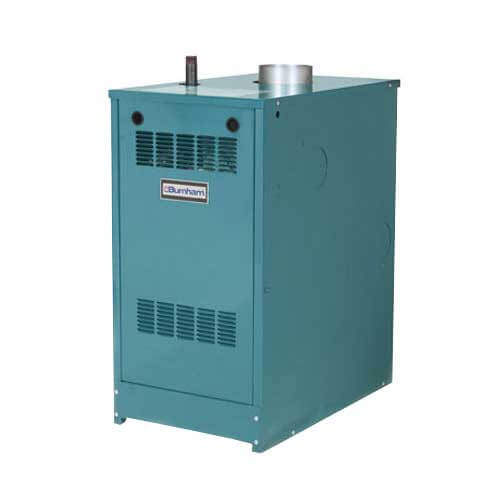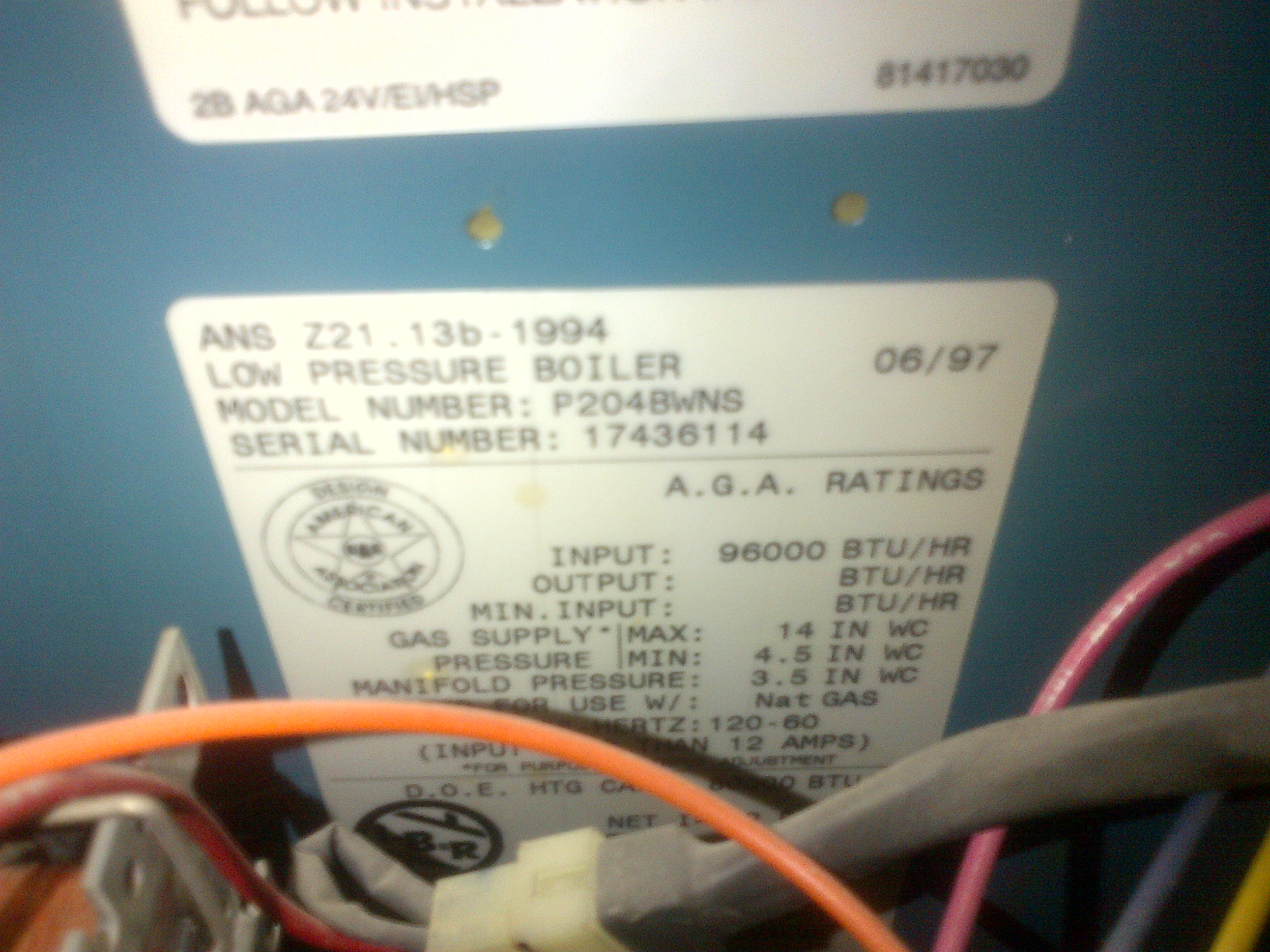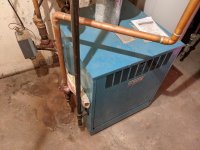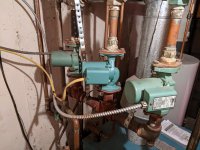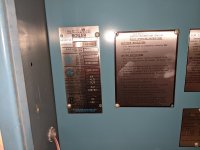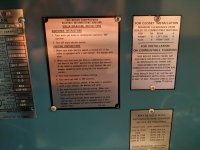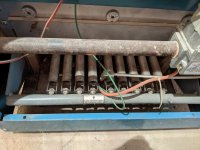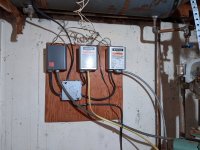While it's possible to properly DIY a mod-con installation it's well beyond the design & implementation skills of most.
A proper DIY installation of an economizer control is orders of magnitude easier.
The boiler's nameplate indicates it's "only" the 6- plate P206, not the P208 or bigger, with an input of 164K, and DOE output of 136K (=83% combustion efficiency):
That means it's "only" ~4x oversized for the design load (as if they were expecting it to sometimes drop to -170F during a cold snap

.)
That's an oversize factor low enough for a heat purging economizer to pull the as-used AFUE efficiency fairly close to whatever it's current steady-state efficiency is, which could easily be still north of 80%. At that oversize factor the seasonal duty cycle has been very low- it's burner on-time over the past 53 years has been only ~25-30% of what a right-sized boiler would have run, so it's the burner-time equivalent of a ~15 year old right sized boiler. There are no guarantees, but with total lifecycle burner on-time being so minimal, with reasonable maintenance it'll probably keep going for a
least another decade, or until the owner is just plain sick of it, or burning of natural gas in homes is regulated out of existence for climate change reasons.
If a primary goal of addressing is short financial payback the economizer should work, and the real money can be spent on where the real comfort, control, and efficiency problems (usually) are in houses of that vintage, namely the air infiltration & insulation deficiencies of the house.
Assuming a professionally installed mod-con boiler would run ~$10K, and save about 15% on gas use from what the P206+ Hydrostat 3200 or similar would use, is that the best use of the $10K right now, assuming the P206 probably will be just fine for at least 10 years? (I've seen many 70-80 year old cast iron boilers with dumb controls still chugging along just fine.) The anticipated lifecycle of air sealing and insulation improvement efforts would be several times the 15-25 year reasonable lifecycle to expect out of a new mod-con boiler. That much money would buy quite a bit of retrofit air sealing & insulation upgrading, in most case saving MORE than 15% on the gas bill on a 1960s vintage house if done in the right order (putting "new high performance windows" on the very BOTTOM of the list, or skip it entirely). Typically uninsulated, unsealed basement foundation walls are probably 15%, the air leakage out of the attic is probably another 5-10%. If the framed walls in the finished floors are uninsulated or only built with half-depth "econobatts" (surprisingly common even in 1967) or deteriorating R11s, dense packing those walls with cellulose could be another double-digit percentage, and make a large difference in comfort (and noise penetration from the outdoors).
If the house doesn't currently have air conditioning, applying the $10K to a heat pump solution capable of covering both the heating & cooling loads would be another option, though that has the same lifecycle issue as a new boiler- it's really better to just start with the house. If PA begins to follow other states on zero greenhouse gas emissions policies there may come a time in the next decade where installing a heat pump solution becomes a financial no-brainer (still TBD.) This isn't some crazy theory- technologically heat pumps have come a very
long way since the 1980s. Most 1960s vintage 2x4 framed ~2400' houses in PA could be reasonably heated with a 4 ton cold climate heat pump, and most houses that have undergone more than a cursory round of air sealing & insulation upgrading can be handled by a 3 tonner, or even a 2.5 tonner, at outdoor design temps that bump into low negative digits F. The local design temp here is ~ +10F, dead-easy to design for with any heat pump utilizing enhanced vapor injection scroll compressors & ECM drive motors for the compressor & blowers, and is within the capacity range of many heat pumps using simpler-dumber compressors.
It won't usually be cheaper in most market to run heat pumps than an 80% efficiency gas boiler at current pricing, (particularly in fracked-gas country like PA) but it almost always beats #2 oil & propane hands-down. With any significant amount carbon emissions pricing tacked on to natural gas heat pumps quickly become the lowest operational cost option. In my own locally high priced electricity and high priced gas market heat pumps are already pretty much at parity with 80% efficiency gas, but are still more expensive to run than condensing gas. With my own low-temp hydronic heating system (~125F water temps) I have limited options to electrify, but not ZERO options. A 4 or 5 ton
LG Multi-Vs with a hydro kit would do just fine, but by the time the state & federal policy incentives kick in I'm hoping there will be more options. There are currently MANY more hydronic heat pump options being marketed in Europe. In North America there are several hydronic output heat pumps available that are "monobloc" style, where refrigerant loops are self contained in the outdoor unit. Those require only water connections to the system, but that would require anti-freeze in my area- something I'd prefer not to have. A split system (like the Multi-Vs with only refrigerant and electricity going through the walls just works better for me. (YMMV).
If my gas burner crapped out right now this week I'd probably still just swap in a cheap mod-con and wait for the incentives to align. But I'm also sick enough of my ridiculously oversized AC that it won't take
too much shift in policy carrot (& stick) incentives to revisit that.

